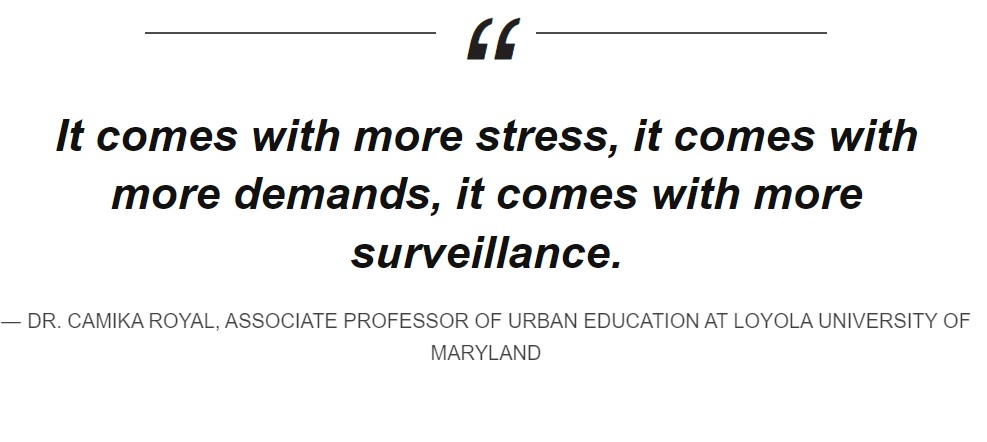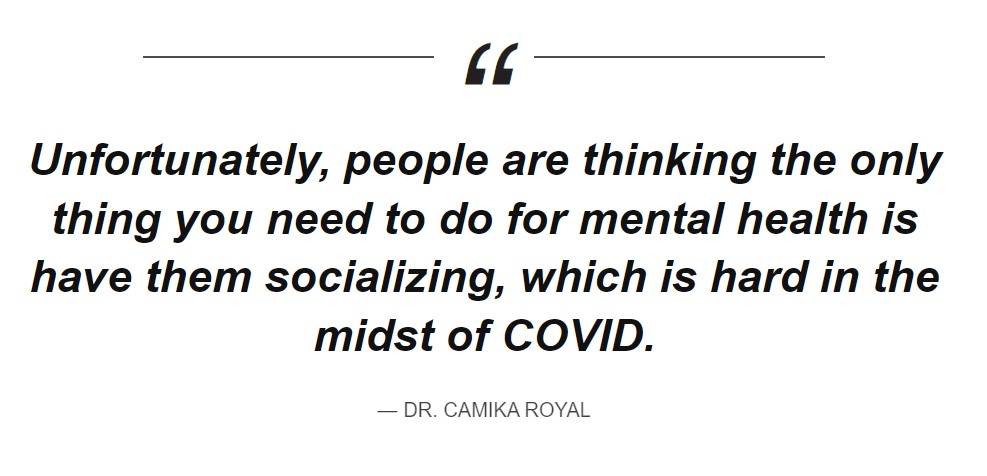Back in the ’90s, Puff Daddy rapped about how life is “All About the Benjamins” — but, really, it’s all about zip codes.
Zip codes often determine the school district — or the school within a district — where kids will spend their K-12 education, which also decides the opportunities and resources they have access to. These school zoning boundaries are invisible, but they have a very real effect on children. Live on one side of a street and your child might have access to a better education — a policy that we’re supposed to accept as just being the way it is. And if you don’t follow it? Black parents inadvertently crossing a school zoning line in search of better educational opportunities for their kids have been arrested.
So what are the differences when you cross a zoning boundary line — and the racial dividing line — between schools? It turns out the big three are (surprise, surprise) teacher experience and quality, access to school counselors, and the number of security guards.
Word In Black analyzed the Dividing Lines database from the Urban Institute, which looks at key differences in neighboring pairs of public schools along more than 65,000 zoning boundaries. In creating the database, Urban Institute paired schools based on their school attendance boundaries, sorting the pairs into groups A and B. The A group is the side of the boundary with more Black or Hispanic residents, and the B group is the side with fewer Black or Hispanic residents.
Majority Black and Hispanic Schools Have More Early Career Teachers
Overall, the schools on the A-side, the majority Black/Hispanic side of the boundary, have a higher share of early-career teachers than the B-side.
The analysis showed early career teachers are teaching in schools on the majority Black/Hispanic side of the boundary at a rate of 7% more than the other side. If we just look at majority-Black schools, the disparity is even higher: early career teachers are in majority-Black schools 47% more than in the majority-white schools on the same side of the boundary.
This has been going on for decades, according to Dr. Ivory Toldson, a Howard University professor and director of education innovation and research at the NAACP. In the end, it comes down to stark funding disparities: more experienced teachers are paid more money, and less experienced teachers receive less money.
“You have teachers who want to teach in what they consider a good school district: a district that has more resources, more affluent students,” Toldson says. “The schools that have those types of resources and have that reputation, they get more candidates, and they’re able to pick the most qualified candidates.”
affluent students,” Toldson says. “The schools that have those types of resources and have that reputation, they get more candidates, and they’re able to pick the most qualified candidates.”
“What tends to happen is that where you have Black students and Latinx students concentrated, you also have concentrations of poverty,” says Dr. Camika Royal, an associate professor of Urban Education at Loyola University of Maryland. “Teachers, for the most part, don’t always want to teach in those environments — not because they’re terrible people, necessarily, but because it comes with more stress, it comes with more demands, it comes with more surveillance.”
Students Face More Surveillance on the Largely Black and Hispanic Side of the Boundary
There’s been plenty of talk in education circles about the school-to-prison pipeline, and it seems it’s functioning as designed.
Word in Black found that there are 17% more security guards in schools on the Black/Hispanic side of the school zoning boundary. And, on that majority Black/Hispanic side of the boundary, on average, majority-Black schools have about twice the number of security guards than the majority-white schools.
And in their series Criminalizing Kids, the Center for Public Integrity found that in 46 states, Black students were referred to law enforcement at higher rates than the national total rate of referrals.

“I always ask when do Black children get to experience love that is gentle?” Royal says. “Love that is tender? Love that is redemptive or compassionate? I think our schools still see not even just Black children — Black families, Black people — as people who need to be controlled and need to be taught how to be instead of just working with us as human beings.”
Mental Health Should Not Be a Privilege — In Schools or Otherwise
Compassion should be coming from school counselors, but they’re a resource that is more common on the boundary with the lower share of Black and Hispanic residents. Though the data does not show significant differences in the presence of school counselors, Toldson says that is misleading and there’s still an “unevenness.”
“Students from more affluent backgrounds, a lot of times their parents will pay for counselors outside of the school,” Toldson says. “On the other hand, if you have mostly students whose parents can’t afford counselors, private therapy, or private mental healthcare, then you actually need a higher counselor-to-student ratio at those schools. That’s a case where, when they appear even, that may actually still be a disparity.”
The pandemic has taken a toll on everyone’s mental health. Especially Black people, and especially Black children. Unfortunately, Royal says, the conversation surrounding students’ mental health has been “very narrow.”
“Not only are the children extra stressed, but the adults who are supposed to be helping them cope with the stress, they’re also extra stressed,” Royal says. “School districts, especially under-resourced school districts, are struggling. They’re being reactive and trying to figure out all these competing interests.”
Between the immense pressures of trying to keep kids both in school and COVID-free, Royal says mental health gets pushed down on the priority list and is lacking the rich conversation it deserves.
“Unfortunately, people are thinking the only thing you need to do for mental health is have them socializing, which is hard in the midst of COVID,” she says. “Our kids are dealing with a lot around: Is this gonna kill me? Is this gonna kill my family? Does my school have the capacity to keep me safe?”
Where Are We on Desegregating Schools?
The Urban Institute’s Dividing Lines report features an interactive map to show where school boundaries are drawn and exactly how schools remain segregated. Seemingly arbitrary imaginary lines group Black and Hispanic students together, keeping white students on the other side.
Royal covers this topic in her forthcoming book, Not Paved for Us: Black Educators and Public School Reform in Philadelphia. While she is not opposed to school desegregation, Royal doesn’t think it’s the only solution to ensuring Black children receive an excellent education.
“Why aren’t Black children in their own schools worthy of these resources?” Royal asks. School desegregation, Royal explains, was a way of selling schools and neighborhoods that were considered “undesirable to white people.”
“School desegregation became something where our needs weren’t necessarily centered,” Royal says. “It was like, ‘we need to sell it to white people. We have to somehow make the Black students palatable for them, but also present Black students as a learning opportunity,’ which then is not fair to Black students.”
Dr. Royal’s insight makes sense to Toldson, a parent, who says he doesn’t believe “simply being around white students is good enough for them to get the kind of education that they need.” However, he says having a segregated environment is a “dangerous proposition,” especially with income disparities.
“In this country,” Toldson says, “it always leads to disparate outcomes.”

